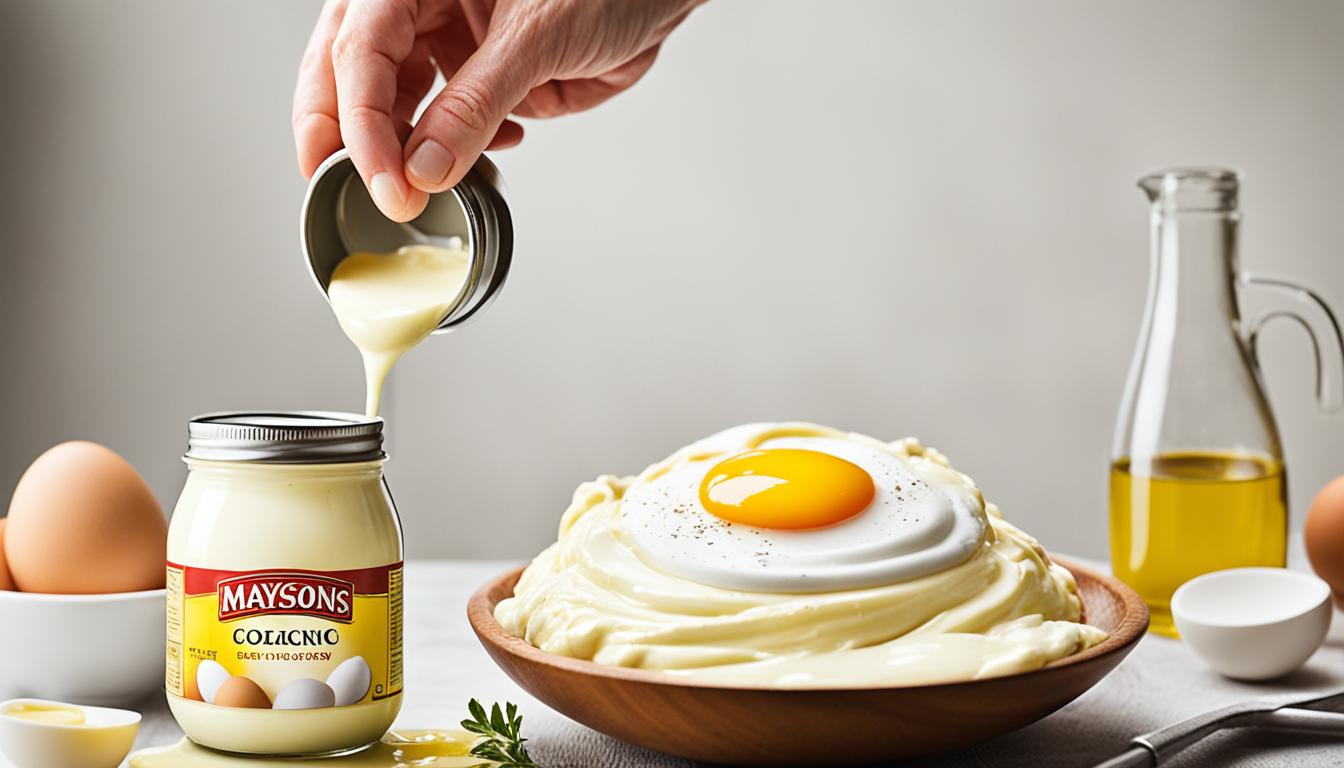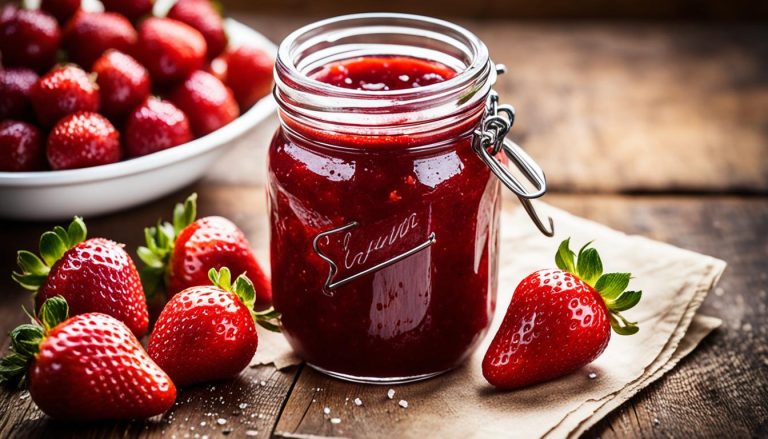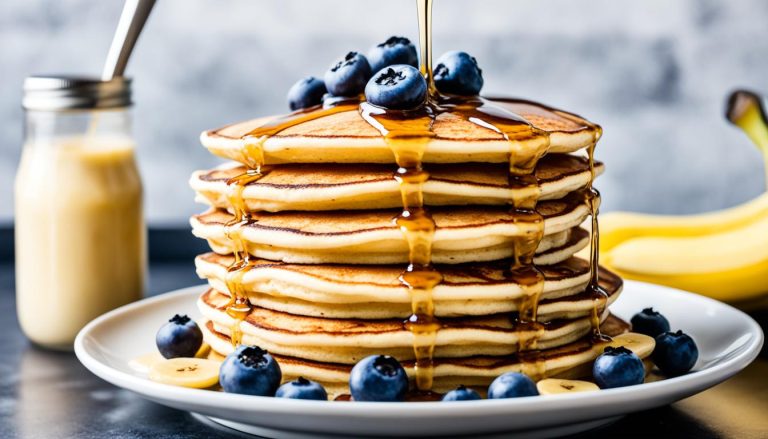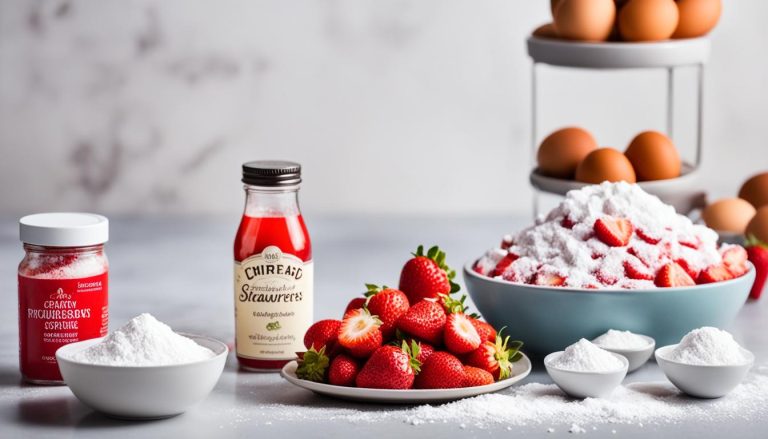Looking for a classic mayonnaise recipe that is easy to make and yields a creamy, delicious result? Look no further! Homemade mayonnaise is the perfect way to elevate your sandwiches, salads, and other dishes. With this fail-proof recipe, you can whip up a batch of homemade mayo in less than 10 minutes using common ingredients found in most kitchens.
Unlike store-bought mayonnaise, which often contains additives and preservatives, making your own mayo allows you to control the quality of the ingredients and customize the flavor to your liking. Plus, homemade mayo can last up to two weeks in the fridge, ensuring you always have a fresh and tasty condiment on hand.
Whether you’re a seasoned chef or a novice in the kitchen, this easy mayonnaise recipe is perfect for everyone. No need to fuss with separating eggs, as this recipe uses whole eggs, making it even simpler to prepare. So grab your ingredients and let’s get started!
Ingredients for Homemade Mayo
Making homemade mayonnaise is a breeze with simple ingredients you probably already have in your kitchen. To whip up a batch of delicious mayo, you’ll need:
- Eggs
- Mustard
- Vinegar or lemon juice
- Neutral-flavored oil
Using whole eggs eliminates the need for separating yolks and simplifies the process. While raw eggs are traditionally used, pasteurized eggs are a safe alternative for those concerned about consuming raw eggs. Mustard acts as an emulsifier, binding the ingredients together and providing stability. Adding vinegar or lemon juice adds a tangy flavor and also helps stabilize the mayonnaise. When it comes to oil, opt for neutral-flavored options like grapeseed, safflower, avocado, or canola oil to achieve a clean-tasting mayo.

“Making homemade mayo is all about using simple, quality ingredients. Fresh eggs, tangy mustard, and a neutral-flavored oil come together to create a creamy and flavorful condiment.”
How to Make Homemade Mayonnaise? – Step-by-step
When it comes to making homemade mayonnaise, there are different methods you can try. This recipe recommends using a food processor, immersion blender, or making it by hand. Regardless of the method chosen, it’s crucial to have all ingredients at room temperature.
Here is a step-by-step guide to making your own delicious mayonnaise:
- Blend the Ingredients: In a food processor or blender, combine an egg, mustard, vinegar or lemon juice, and a pinch of salt. This initial blending helps to emulsify the mixture.
- Slowly Add the Oil: With the processor or blender running, slowly drizzle in the oil in small drops. This gradual process helps to create a thick and creamy consistency. Continue blending until the mayo is smooth and well combined.
- Customize the Flavor: Once the mayonnaise is ready, you can personalize it by adding additional ingredients. Try mixing in some lemon juice, fresh herbs, roasted garlic, chipotle, or curry powder for extra flavor.
- Fixing Broken Mayonnaise: If your mayo breaks or becomes too thin, don’t worry! You can fix it by adding an egg yolk or a spoonful of mustard to a separate bowl. Slowly add the broken mayonnaise to the egg yolk or mustard while whisking vigorously. This gradually emulsifies the mixture back to its desired consistency.
By following these simple steps, you can create a batch of homemade mayonnaise that is rich, creamy, and full of flavor. Whether you prefer a smooth and classic mayo or want to experiment with different variations, making your own mayo is quick, easy, and rewarding.
Remember, always store your homemade mayo in a covered container in the refrigerator and enjoy it within two weeks.

Expert Tip:
“For a foolproof method, use a food processor or immersion blender. These tools ensure a smooth and creamy mayonnaise consistency. Don’t rush when adding the oil, as this slow drizzle is key to achieving the perfect texture.”
Tips and Tricks for Perfect Homemade Mayo
Creating the perfect homemade mayo requires attention to detail and a few helpful tips and tricks. Follow these suggestions to ensure your mayo turns out creamy and delicious every time.
Use Room Temperature Ingredients
Using ingredients at room temperature is crucial for achieving the desired consistency in homemade mayo. Make sure to let your eggs, mustard, vinegar or lemon juice, and oil come to room temperature before starting the recipe. This allows for better emulsification and results in a smoother and creamier mayonnaise.
Choose the Right Container
When using an immersion blender or food processor to make mayo, it’s important to use a narrow container that fits the blending tool. This ensures that the mixture can blend smoothly and evenly. A container that is too wide may prevent proper emulsification and result in a broken mayo.
Bring Cold Eggs to Room Temperature
If your eggs are cold, you can quickly bring them to room temperature by placing them in lukewarm water for a couple of minutes. Cold eggs can hinder the emulsification process and make it more challenging to achieve the desired consistency in your mayo.
Adjust the Consistency
If your homemade mayo turns out too thick, you can easily adjust the consistency by adding a tablespoon or two of water. Gradually incorporate the water while whisking or blending until you reach the desired thickness. This trick allows you to customize the texture of your mayo to suit your preferences.
Taste and Adjust Flavors
After preparing your mayo, take a moment to taste it and adjust the flavors as desired. Add more salt, vinegar, or lemon juice to enhance the tanginess, or add other seasonings and herbs to personalize the taste. Remember, the best mayonnaise recipe is one that suits your unique palate.
Proper Storage
To ensure your homemade mayo remains fresh and flavorful, store it in a covered container in the refrigerator. Homemade mayo can typically last for up to two weeks when stored properly. Avoid leaving it at room temperature for extended periods as this can lead to spoilage.
| Tips and Tricks for Perfect Homemade Mayo |
|---|
| Use room temperature ingredients |
| Choose a narrow container for blending |
| Bring cold eggs to room temperature |
| Adjust the consistency with water |
| Taste and adjust flavors as desired |
| Store in a covered container in the refrigerator |

Follow these tips and tricks to achieve the best results with your homemade mayo. With a little practice, you’ll be able to master this easy mayo recipe and enjoy the superior taste of homemade mayo in all your favorite dishes.
Alternative Homemade Mayonnaise Recipe
Are you looking for an eggless or vegan alternative to traditional mayonnaise? Look no further! You can make a delicious mayonnaise without eggs using alternative ingredients like aquafaba (chickpea brine) or silken tofu. These alternatives provide a similar texture and creaminess to regular mayo, making them perfect for vegan or eggless diets.
Aquafaba, the liquid from canned chickpeas, is a fantastic egg substitute that works wonders in homemade mayonnaise. Simply whip it up until it reaches a thick consistency, and then gradually add your chosen oil while blending. This will result in a creamy and flavorful vegan mayo that can be flavored to your liking with herbs, spices, or even garlic.
Another option is using silken tofu, which provides a smooth and creamy base for vegan mayo. Blend the tofu with oil, lemon juice, mustard, and seasonings, and you’ll have a delicious and healthy mayonnaise alternative that matches the taste and texture of traditional mayo.
Experiment with different ingredients and ratios to find the perfect vegan or eggless mayo recipe that suits your preferences. Whether you’re following a plant-based diet or simply looking for a healthier alternative to conventional mayo, these recipes are sure to satisfy.
Comparison of Traditional Mayo and Eggless Mayo
Here’s a comparison of the nutritional content of traditional mayonnaise and eggless mayo alternatives:
| Traditional Mayonnaise | Eggless Mayonnaise | |
|---|---|---|
| Calories | 90 | 60 |
| Total Fat (g) | 10 | 5 |
| Saturated Fat (g) | 1.5 | 0 |
| Cholesterol (mg) | 5 | 0 |
| Sodium (mg) | 90 | 80 |
| Protein (g) | 0 | 1 |
As you can see, eggless mayo options generally have fewer calories, less fat, and no cholesterol compared to traditional mayonnaise. They offer a healthier alternative without sacrificing taste or texture.
Try These Vegan Mayo Brands
- Vegenaise: A popular vegan mayonnaise brand made from non-GMO soybeans. It has a creamy texture and a tangy flavor.
- Hellmann’s Vegan: Hellmann’s, known for its classic mayo, offers a vegan version made with plant-based ingredients. It delivers the same rich and creamy taste.
- Follow Your Heart: Known for its wide range of plant-based products, including vegan mayonnaise. They offer different varieties like traditional, chipotle, and reduced-fat options.
“I was skeptical about eggless mayo, but after trying a homemade aquafaba mayo recipe, I’m hooked! The texture is perfect, and the taste is even better than traditional mayo.” – Sarah, Vegan Foodie
No matter which option you choose, these vegan mayo alternatives offer a healthy, cruelty-free, and tasty alternative to traditional mayonnaise. They are excellent choices for anyone looking to reduce their consumption of animal products or trying to follow a vegan lifestyle.
Homemade Garlic Mayonnaise
To add a burst of flavor to your sandwiches, burgers, and dips, try making a homemade garlic mayonnaise. This versatile condiment is easy to make and will take your dishes to the next level. There are two ways you can infuse your mayo with garlic goodness.
Option 1: Fresh Garlic Paste
For a bold and intense garlic flavor, start by crushing 5-6 cloves of garlic into a paste. Sprinkle a pinch of salt over the crushed garlic and continue to grind it into a smooth paste. Then, simply mix the garlic paste into your homemade mayo until well combined.
Option 2: Roasted Garlic
If you prefer a milder garlic taste, roasted garlic is the way to go. Preheat your oven to 400°F (200°C). Cut off the top of a garlic bulb to expose the cloves. Drizzle it with olive oil, sprinkle with salt, and wrap it in foil. Bake for 30-40 minutes until the garlic becomes soft and golden brown. Squeeze the roasted garlic cloves out of their skins and mash them with a fork. Add the mashed roasted garlic to your mayo and mix until evenly distributed.
Whether you choose fresh garlic or roasted garlic, this homemade garlic mayonnaise will elevate your meals with its rich and savory flavor. Remember that when using garlic, it’s best to omit mustard from the recipe as the garlic provides its own emulsifying properties.
Now, let’s take a look at a table showcasing the key differences between homemade garlic mayonnaise and store-bought mayonnaise:
| Comparison | Homemade Garlic Mayonnaise | Store-Bought Mayonnaise |
|---|---|---|
| Taste | Rich and flavorful with a distinct garlic kick | Milder and more generic flavor |
| Ingredients | Includes fresh garlic or roasted garlic | May contain artificial flavors and preservatives |
| Customization | Can be personalized with other herbs and spices | Limited customization options |
| Quality | Uses fresh ingredients, resulting in a homemade touch | Mass-produced with standard ingredients |
| Cost | Cost-effective compared to store-bought options | May be more expensive |
As you can see, homemade garlic mayonnaise offers superior taste and quality compared to store-bought varieties. With just a few simple steps, you can create a flavorful and delicious condiment that will enhance your favorite dishes. So why not give it a try and elevate your meals with homemade garlic mayo!
Variations and Uses for Homemade Mayo
Homemade mayo offers endless possibilities for customization, allowing you to add various ingredients to enhance its flavor. Consider experimenting with these additions:
- Fresh Herbs: Chop up your favorite herbs like basil, parsley, or dill, and mix them into the mayo for a burst of freshness.
- Ground Black Pepper: Add a pinch of ground black pepper to give your mayo a subtle kick.
- Sugar: For a touch of sweetness, you can incorporate a teaspoon of sugar into your homemade mayo recipe.
But the versatility of homemade mayo extends beyond just being a standalone condiment. It can be used as a base for creating creamy salad dressings like blue cheese, tartar sauce, or ranch dressing. This creamy and flavorful mayo can take your dressings to the next level, elevating your salads and enhancing their taste.
Furthermore, homemade mayo is an essential ingredient in a variety of dishes. It serves as the perfect foundation for classics like deviled eggs, tuna salad, chicken salad, and Maryland-style crab cakes. The rich and creamy texture of homemade mayo adds depth and richness to these dishes, transforming them into crowd-pleasers.
To provide a visual representation of the wide range of uses for homemade mayo, here is a table showcasing some popular dishes where homemade mayo shines:
| Dish | Description |
|---|---|
| Potato Salad | A classic side dish that combines potatoes, mayo, and other ingredients like celery and onions. |
| Coleslaw | A refreshing salad made with shredded cabbage and carrots, dressed with mayo, vinegar, and sugar. |
| Macaroni Salad | Cold pasta mixed with mayo, hard-boiled eggs, vegetables, and seasonings. Perfect for picnics and barbecues. |
| Shrimp Salad | Chilled shrimp combined with mayo, celery, lemon juice, and herbs. A light and refreshing seafood dish. |
As you can see, homemade mayo adds a special touch to a wide range of dishes, making them creamier, tastier, and more enjoyable. Feel free to experiment with different flavors and ingredients to create your own unique variations of homemade mayo.
Conclusion
Making homemade mayonnaise is a simple and rewarding process that results in a creamy and flavorful condiment. With readily available ingredients and a few minutes of preparation, you can enjoy the superior taste of homemade mayo.
Experiment with additional ingredients and flavors to create your own signature mayo. Whether used as a spread, dressing, or dip, homemade mayo adds a special touch to a variety of dishes. Say goodbye to store-bought mayonnaise and enjoy the creamy goodness of homemade mayo made exactly to your liking.
FAQ
Is making homemade mayonnaise difficult?
Not at all! Making homemade mayo is simple and easy. With this fail-proof recipe, you can whip up a creamy and flavorful batch in less than 10 minutes.
What ingredients do I need to make homemade mayonnaise?
The ingredients for homemade mayo are eggs, mustard, vinegar or lemon juice, and neutral-flavored oil. You can use whole eggs instead of just the yolks, making it even easier to prepare. And don’t worry, you can use pasteurized eggs if you have concerns about consuming raw eggs.
What is the best method to make homemade mayo?
You can make homemade mayo using a food processor, immersion blender, or by hand. Regardless of the method, make sure all the ingredients are at room temperature for the best results.
How do I fix mayonnaise if it breaks or becomes too thin?
If your mayonnaise breaks or becomes too thin, you can fix it by adding an egg yolk or mustard. Slowly emulsify the broken mixture into the added ingredients to bring it back to the desired consistency.
Can I make mayo without eggs?
Absolutely! If you’re looking for an eggless or vegan alternative, you can make mayo using ingredients like aquafaba (chickpea brine) or silken tofu. These alternatives provide a similar texture and creaminess to traditional mayo.
How can I make garlic mayonnaise?
To make garlic mayo, crush 5-6 cloves of garlic into a paste with salt, then add it to the mayo. You can also add roasted garlic for a milder garlic flavor. Just make sure to omit mustard from the recipe if you’re using garlic, as it provides its own emulsifying properties.
What can I use homemade mayo for?
Homemade mayo is a versatile condiment that can be used as a spread, dressing, or dip. You can customize it with additional ingredients like fresh herbs, ground black pepper, or even sugar to enhance the flavor. It’s also a great base for creamy salad dressings like blue cheese, tartar sauce, or ranch dressing.
How long does homemade mayo last?
Homemade mayo can be stored in a covered container in the refrigerator for up to two weeks. Just make sure to check for any signs of spoilage before using.
Why should I make homemade mayo instead of buying it from the store?
Making homemade mayonnaise allows you to customize the recipe according to your preferences and ensures a fresh and flavorful outcome. Plus, it’s a fun and rewarding process that can elevate the taste of your dishes.









